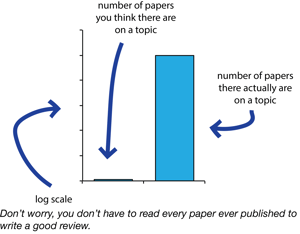
“Received a fine research paper on Organizational behavior with an accurate MLA format. Impressed, well done!” – Alex J.
If you are one of those demanding students who expect an in-depth research and impeccable writing, this service is for you. Certified writers satisfy needs of every student and always go an extra mile to exceed their expectations with pleasant extras. Confidentiality and high quality are the top reasons why students choose this website. Students can contact writing support 24/7. An important advantage of this writing company is free unlimited revisions.
“I needed my term paper very urgently so I chose the 12-hour deadline – and I was surprised to find it in my inbox in just 10 hours. It was really good quality, too.” – Marcus Stewart
At research paper writing service employs experienced writers and editors to provide high quality original papers for college students. The website promises to cope with any task and any study level. 24/7 live support can help you address any issue whenever it arises. The main page of the site says that they deliver at least 100 completed orders every day.
📝 What is the best research paper writing service?

Pricing: The main parameters influencing price include academic level, paper type, subject and deadline. A high school essay may cost $16,49 per page. Minimum order is at least 2 pages though.
Pricing: Prices depend upon writer’s preferences and your negotiation skills, but the minimum where bidding starts is $7.50 per page.
With careful selection, using research paper writing services may be just what one needs to help with a hectic schedule.
![]()
Looking through relevant article review examples can be beneficial for you in the following ways:
- Start off by looking at and assessing the title of the piece, its abstract, introductory part, headings and subheadings, opening sentences in its paragraphs, and its conclusion.
- First, read only the beginning and the ending of the piece (introduction and conclusion). These are the parts where authors include all of their key arguments and points. Therefore, if you start with reading these parts, it will give you a good sense of the author’s main points.
- Finally, read the article fully.
Just send us the requirements to your paper and watch one of our writers crafting an original paper for you.
When you know the answers to these questions, you may start writing your assignment. Below are examples of MLA and APA formats, as those are the two most common citation styles.
Example of an Article Review
That is a type of professional paper writing which demands a high level of in-depth analysis and a well-structured presentation of arguments. It is a critical, constructive evaluation of literature in a particular field through summary, classification, analysis, and comparison.
Step 2: Move on and review the article. Here is a small and simple guide to help you do it right:
In this section, revisit the critical points of your piece, your findings in the article, and your critique. Also, write about the accuracy, validity, and relevance of the results of the article review. Present a way forward for future research in the field of study. Before submitting your article, keep these pointers in mind:
- To get you introduced to the key works of experts in your field.
- To help you identify the key people engaged in a particular field of science.
- To help you define what significant discoveries and advances were made in your field.
- To help you unveil the major gaps within the existing knowledge of your field—which contributes to finding fresh solutions.
- To help you find solid references and arguments for your own review.
- To help you generate some ideas about any further field of research.
- To help you gain a better understanding of the area and become an expert in this specific field.
- To get a clear idea of how to write a good review.

Once you start reading, there will be a temptation to include every piece of information that was ever published. Obviously this isn’t possible. So, define your scope from the onset. Perhaps you, a colleague, or your adviser was invited to write on a particular topic. Alternatively, maybe you’re researching a topic for which no relevant or recent review exists. Once you pick a topic, try to be specific about exactly what aspect of the field you plan to review. If it’s a well-researched field, you may need to get specific to make sure your article doesn’t turn into a textbook.
1. Haery, Leila, Ryan C. Thompson, and Thomas D. Gilmore. "Histone acetyltransferases and histone deacetylases in B-and T-cell development, physiology and malignancy." Genes & cancer 6.5-6 (2015): 184. PubMed PMID: 26124919. PubMed Central PMCID: PMC4482241.
Typically lists and pictures are the most useful parts of reviews. These could be in the form of figures/schematics or tables. And don’t forget to include citations so that people can go back and read the original reference for the data. For example, we summarized how frequently each member of a class of proteins was mutated, as reported in various studies. We made a table that listed each protein in the class, then for each protein we listed all the studies that reported mutations in that protein (including how frequently a mutation was found and the size of the study). This was useful because you could easily see how frequently each protein was mutated, you could see how big the studies were, and you could find the original paper if you wanted to learn more. Another example: we made a schematic of all the proteins in the class that showed the relative sizes and the conserved domains. This information was available in GenBank, but it was useful to present it all in one place to get a sense of the similarities and differences among proteins in the class.
Writing a review article is a wonderful way to develop and exercise your scientist skill set. If you dread the thought of writing a review, or if you’re currently stuck trying to write one, hopefully this post will help you get things moving - remember you're becoming an expert in your field and are the perfect person to be writing the review! Doing so is a great way to develop your ability to write, to read efficiently, to search the literature, and to synthesize a large volume of information: basically, a scientist’s tool kit.
Get the journal’s submission rules for review articles

I started by reading other reviews because, as I mentioned, I wasn’t an expert in the field. To find reviews, I just searched online and found ones that I thought “looked good” by no definitive criteria. I read these articles to get a sense of the themes in the field and to learn what people cared about. I also used reviews to get a list of research papers that I needed to read. Once I had an idea of the themes in the field, I searched for recent research papers on these particular themes, for seminal papers on these themes, and also for articles from the active/well-known researchers in the field. I made sure to find information from genome-wide studies, as well as results from smaller and more specific studies. I also did not limit myself to the well-cited or popular papers, but looked for papers from a wide range of authors.
When I first started I thought I would read a bunch of papers and then feel ready to write. What actually happened was that each paper taught me a few things and also highlighted a few dozen things that I didn’t know about. Instead of reading a paper and getting my bearings, I would read a paper, panic, and then download a bunch of other papers. In mathematics, I think this is represented by factorials. In environmental science and ecology, this can be represented by the tip of the iceberg. For writers, this is probably “a normal day.” The way I broke this cycle was to just start writing.
I wrote a review article on histone modifers in B and T cells with my adviser when I was a graduate student. Naturally, the first thing I did was google “how to write a scientific review.” The second thing I did was stare in horror at the limited number of hits. So, here, I will share my process with you. But before I do that, let me say that I was by no means an expert on this topic when I set out to write the review. That’s just to say that you don’t have to be one either.
We're at the "synthesize information" point now. How do you put all this information together? The most important technique for you is to pre-write -- that is, to have a strategy in place whereby you sketch out the parts of the paper as unambiguously as possible. There are a couple of ways to do this. First, and most obvious, it to use an outline. Second, equally classic, is to create a concept map.
- Is the review arranged historically or topically? Does this seem appropriate?
- If the review is arranged topically, are subheadings used to introduce different groups of studies? Do these sections seem logically organized?
- Does the discussion seem comprehensive and thorough? Are the findings compared and contrasted, and the studies evaluated fairly?
- Are you clear about the direction you are going in as you are reading, and is the logic of development helpful and unified? Do you get lost anywhere, and if so, where?
Second , you should provide some evaluation or critique. This may be very mild (e.g. "There are still many unanswered questions in this area") or quite direct (e.g. "X treatment has a clear record of unacceptable toxicity and should be used only as a last resort, if used at all").
As you've figured out by now, there are many steps to writing a review:
Review Outline and Processes
First, of course, is figuring out the main points that need to be made.
Body Sections -- the outline below is intended to help you organize your thoughts in a couple of different ways.
The traditional outline is hierarchically arranged -- the parts are ordered linearly from beginning to end and also ordered in terms of internal relationships (subordinating relationships). The basic idea here is good, but not so useful for a Review Paper whose body is not often organized linearly. Instead, Reviews are organized topically. The outline then should reflect the parts of the review and their function rather than solely the order items. Below is a template for the Introduction, any Body section, and the Conclusion. These parts can be filled in with phrases or whole sentences.
![]()
Present the strengths and weaknesses you have found in the publication. Highlight the knowledge that the author has contributed to the field. Also, write about any gaps and/or contradictions you have found in the article. Take a standpoint of either supporting or not supporting the author's assertions, but back up your arguments with facts and relevant theories that are pertinent to that area of knowledge. Rubrics and templates can also be used to evaluate and grade the person who wrote the article.
- Web: Author [last name], A.A [first and middle initial]. (Year, Month Date of Publication). Title. Retrieved from
- Journal: Author [last name], A.A [first and middle initial]. (Publication Year). Publication Title. Periodical Title, Volume(Issue), pp.-pp.
- Newspaper: Author [last name], A.A [first and middle initial]. (Year, Month Date of Publication). Publication Title. Magazine Title, pp. xx-xx.
- Pre-title page: here, you will want to list the type of the article that you are reviewing, the title of the publication, all the authors who contributed to it, author’s affiliations (position, department, institute, city, state, country, email ID)
- Optional corresponding author details: name, address, phone number, email, and fax number.
- Running head: Only in the APA format. It is the title of your paper shortened to less than 40 characters.
- Summary page: Optional, depending on the demands of your instructor. The summary should be maximum 800 words long. Use non-technical and straightforward language. Do not repeat text verbatim or give references in this section. Give 1) relevant background 2) explain why the work was done 3) summarize results and explain the method.
- Title page: full title, 250-word abstract followed by “Keywords:” and 4-6 keywords.
- Introduction
- Body: Include headings and subheadings
- Works Cited/References
- Optional Suggested Reading Page
- Tables and Figure Legends (if instructed by the professor.)
Next, create a proper citation for the reviewed article and input it following the title. At this step, the most important thing to keep in mind is the style of citation specified by your instructor in the requirements for the paper. For example, an article citation in the MLA style should look as follows:
Step 5: Summarize the Article.
That is a type of professional paper writing which demands a high level of in-depth analysis and a well-structured presentation of arguments. It is a critical, constructive evaluation of literature in a particular field through summary, classification, analysis, and comparison.
Articles appear most commonly in academic journals, newspapers, and websites. If you write an article review in the APA format, you will need to write bibliographical entries for the sources you use:
Next, identify whether or not there is any unnecessary data in the paper and remove it. Lastly, check the points you discussed in your work
These three steps make up most of the prewriting process. After you are done with them, you can move on to writing your own review—and we are going to guide you through the writing process as well.

